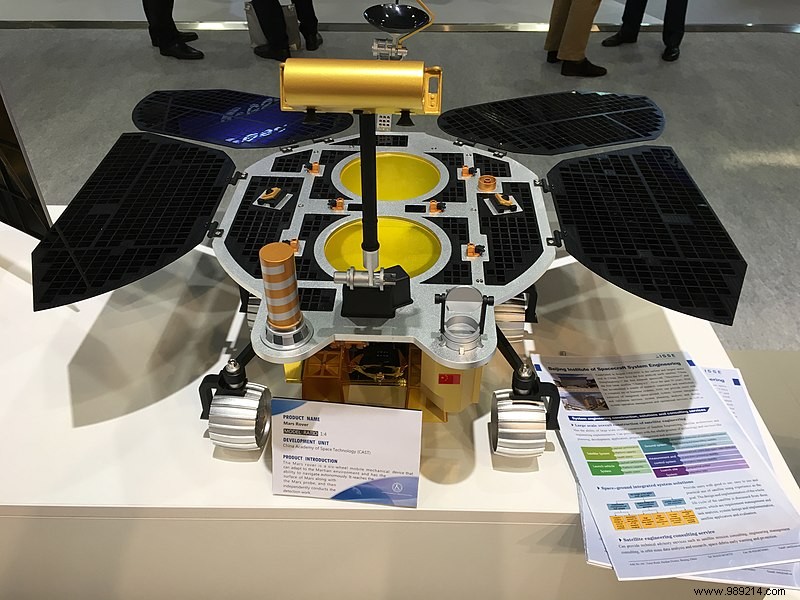While Perseverance has already been on Mars since February, China's rover is still waiting for its chance to land on the Red Planet. The latter, newly named "Zhurong" after an ancient god of fire, will attempt to land in mid-May.
China continues to prepare for the landing of its rover. The Tianwen-1 mission, the country's first interplanetary expedition, is still scheduled to land on a vast rocky plain called Utopia Planitia, where the US Viking 2 lander previously landed in 1976. Operations are expected to take place in mid -may. The landing attempt will involve deploying a parachute, firing retro rockets and inflating huge air cushions (1997-style Pathfinder).
If successful, China will be only the second country to land softly on Mars after the United States.
In the meantime, the Chinese National Space Administration (CNSA) revealed the name of its rover this Saturday, April 24:"Zhurong", after an ancient god of fire. This name was selected from ten shortlisted proposals for an open public vote in January. This choice was supported by a group of experts and the CNSA itself.
The rover is 1.85 meters long and weighs around 240 kg, which makes it much smaller than Perseverance, but larger than the first Spirit and NASA Opportunity.
The rated life of Zhurong, which will be able to move at a maximum speed of 200 meters per hour, is 90 Sols, or 92.5 Earth days. However, remember that Yutu-2, the Chinese rover operating on the "dark" side of the Moon, had a similar design lifespan. Yet it is still active after more than 800 days.
Once there, the solar-powered Zhurong rover, the size of a 500-pound golf cart, will collect data on Martian groundwater. It will also be about mapping the geological structure of the planet.

In the meantime, on the American side, operations continue with Ingenuity. The rotorcraft has already attempted and succeeded three flights.
On its first test, the vehicle rose just over three meters off the ground for 39 seconds. On flight number two, Ingenuity rose four meters off the ground for 52 seconds, moving laterally about four meters. Finally, for its third test, the rotorcraft rose 5.2 meters above the ground before moving about 50 meters at just over 2 meters per second.
These operations should continue for a few days, before giving way to the real mission of Perseverance. Its goals will be to search for signs of past life inside Jezero Crater and collect samples for a future mission back to Earth. In the meantime, the rover has already managed to generate some oxygen on the red planet.